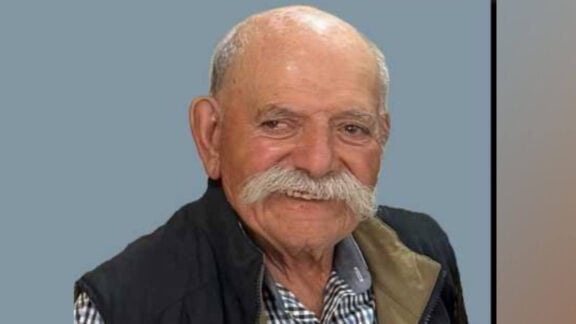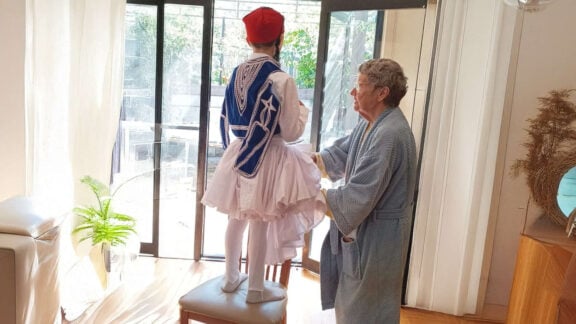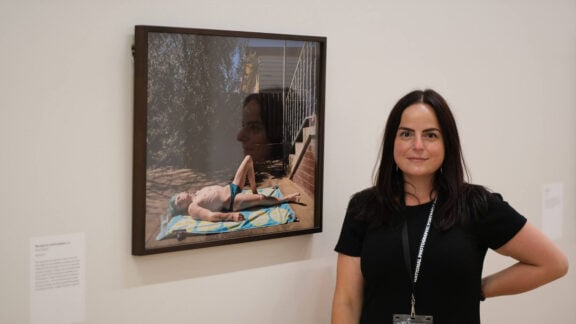“The first thing the industry needs to do is recognise Aboriginal and Torres Strait Islander people, and look for ways to engage with them within your workforce.
The founder of C-Aid Consultants – Chris Calogeras – is in demand. I’ve caught the seafood industry expert, who is normally based on the northern Sunshine Coast, in Canberra, after presenting at a day-long leadership workshop for the Fisheries Research Development Corporation (FRDC).
After more than 25 years working for the NT government and a major seafood exporter, Chris – who traces his ancestry back to Chios (via Egypt) – is a specialist in the sustainable use of aquatic resources, along with fishery and environmental legislation.
Working in the Top End gave him a particular insight into the challenges and opportunities faced by Indigenous communities when it comes to breaking into the commercial fishing industry.
A member of the FRDC’s national Indigenous Reference Group, Chris’ work looks at ways to better utilise a remote labour force with a profound marine knowledge.
With Indigenous people less involved in commercial fishing in Australia’s north than they were 20 years ago – due to fisheries management arrangements being changed in the name of economic efficiency – Chris believes new approaches are needed.
The starting point is recognition of the remarkable human resources at hand.
“The first thing the industry needs to do is recognise Aboriginal and Torres Strait Islander people, and look for ways to engage with them within your workforce,” says Chris.
“The challenge is – how do we take advantage of this workforce? Often they’re in the remote areas where fishing is taking place. The opportunity is there, but licenses are expensive to get.”
Beyond issues of literacy and numeracy, addressing cultural issues in order to create the conditions where Indigenous involvement on a commercial scale can be created – and sustained – is vital, says Chris.
“It’s often not possible for workers to travel too far, or work in other peoples’ country, so those issues have to be taken into account.”
One ground breaking project that has begun utilising Indigenous knowledge and ancient traditions in the NT is a new approach to the harvesting of trepang (sea cucumber).
In the 18th and 19th centuries, Makassan seafarers collected and processed the marine invertebrate prized for its culinary and medicinal values in Asia.
Today, a unique collaboration between Tasmanian Seafoods, Darwin Aquaculture Centre and the Indigenous inhabitants of Groote Island has created a 21st century equivalent of the Makassan operation.
“They’re taking baby trepang, breeding them, and then farming them, in the waters beside their community. It’s a great low-impact operation,” says C-Aid’s founder.
Another business venture – the Garngirr Fishing Aboriginal Corporation (GFAC) on the remote Gove Peninsula, encouraged by NT Fisheries – is another important model for the future.
Promising greater involvement for local communities in the development and management of the region’s abundant fisheries resources, the GFAC co-operative allows individual tribal and family groups to fish their own country, then pool their takings – distribute to their own communities, and the surplus to wider markets.
“What’s good about GFAC is that it understands that catching fish is only the first part of making money in the seafood industry. It’s all about the other aspects as well – logistics, the supply chain and marketing,” says Chris.
“The beauty of this approach is that people work in their relevant bits of country where they have knowledge, it provides food and income for their communities, and they can ship interstate. It’s a good little model.”
Though GFAC may employ less than a dozen workers currently, from little things big things grow.
Meanwhile Chris Calogeras – a passionate advocate of Indigenous involvement in the commercial seafood industry – will be doing what he can to ensure that the first Australians get their share of the catch.








